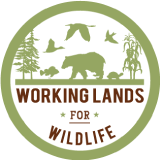by
Web Editor
—
published
Jan 20, 2017
—
last modified
Mar 11, 2022 03:01 PM
—
filed under:
Streams,
TRB Ecology 101,
Video,
Rivers
It’s believed more species of this little critter are found in Tennessee than any other state. While most of them live in our numerous streams and rivers, some are more at home away from those areas, in moist lands near water…even underground. That’s one reason why the crayfish is such an interesting, unique, and beautiful animal. Crayfish diversity brings researchers here from all over the world to study their habitat and life habits. But Wild Side Guide Alan Griggs found two men who don't have to travel far to follow their lives’ passion, learning as much as they can about crayfish while getting shoulder deep in mud and muck.
Located in
Training
/
Videos and Webinars


